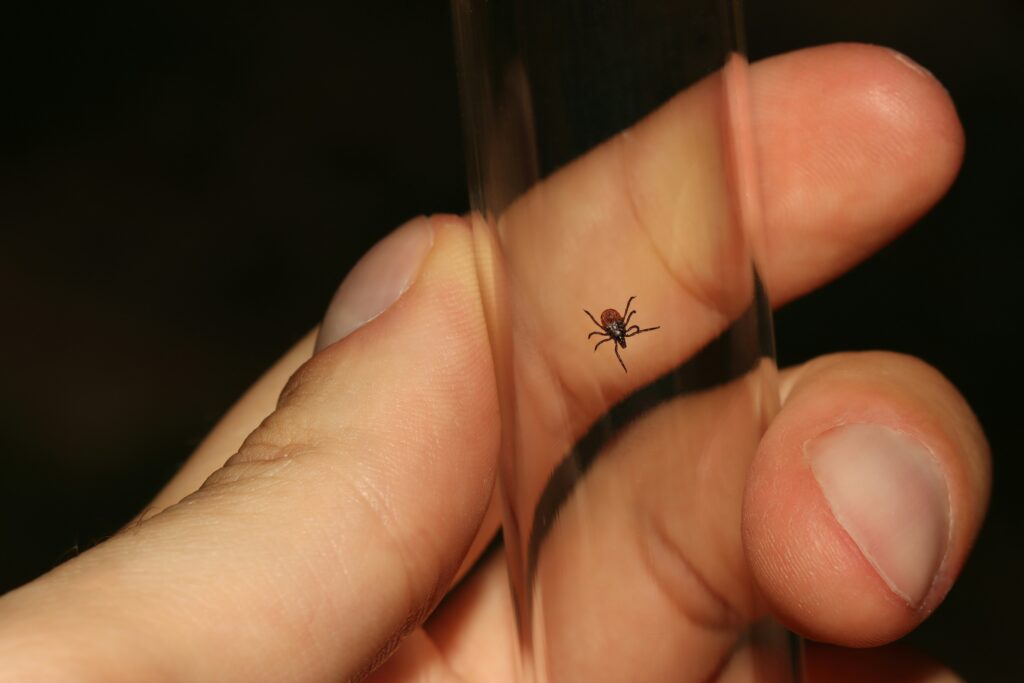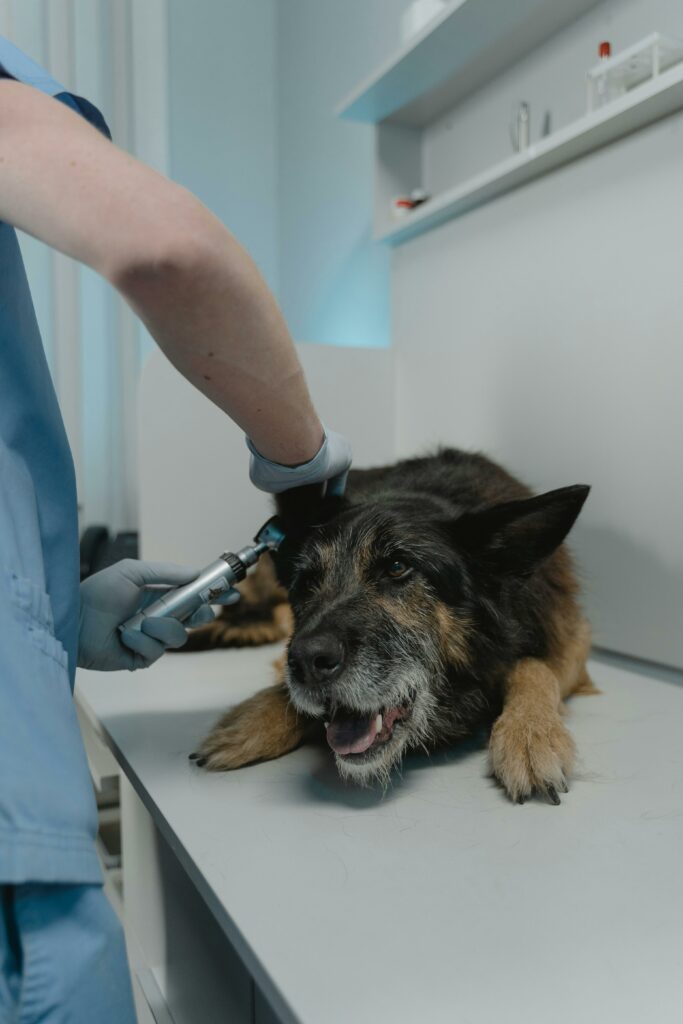
Singapore’s warm and humid climate creates an ideal breeding ground for fleas and ticks, making year-round flea & tick prevention for dogs essential. These parasites not only cause itching and discomfort but can also transmit serious diseases such as Lyme disease, Ehrlichiosis, and Babesiosis.
Understanding Fleas and Ticks
Fleas: Tiny Yet Troublesome
Fleas are small, fast-moving insects that feed on your dog’s blood. Their bites cause intense itching and can lead to allergic reactions, skin infections, and anemia in severe infestations. Additionally, fleas can spread tapeworms when dogs ingest them while grooming.
Ticks: Silent Carriers of Disease
Ticks are larger than fleas and attach themselves to a dog’s skin to feed. They pose a higher risk of disease transmission, and their bites can lead to tick paralysis, which affects a dog’s nervous system. The Brown Dog Tick and Asian Longhorned Tick are commonly found in Singapore and can cause serious health issues if left untreated.

The Best Flea & Tick Prevention Methods
Topical Treatments
One of the most effective ways to prevent flea and tick infestations is through the use of vet-approved spot-on treatments. These treatments, which include Fipronil-based products such as Frontline Plus work by killing parasites on contact and disrupting their lifecycle. Regular application ensures continuous flea & tick prevention for dogs.
Oral Medications
Oral flea and tick preventives are convenient and effective, offering protection that lasts from one to three months. These medications, which include Isoxazoline-based products such as NexGard, target parasites through the bloodstream and prevent infestations before they start. Many pet owners prefer oral preventives because they eliminate the risk of residue on the dog’s fur.
Flea & Tick Collars
Another effective preventive measure is the use of flea and tick collars. These collars, which are infused with insect-repelling ingredients such as Flumethrin and Imidacloprid, provide continuous protection for up to eight months. This is ideal for dogs that spend a lot of time outdoors and need long-term defense against parasites.
Natural Remedies & Preventative Care
For those who prefer natural alternatives, there are several options that can help repel fleas and ticks. Essential oils, such as cedarwood, eucalyptus, and neem oil, can be diluted and applied to your dog’s fur. Apple cider vinegar sprays can also be used as a natural repellent. Additionally, diatomaceous earth, a natural powder, helps dehydrate and kill fleas.
Brands such as NaturVet, Naturel Promise, and TropiClean offer natural flea and tick shampoos that are effective in repelling and eliminating parasites.
Regular grooming, including brushing with a flea comb and frequent bathing with natural flea-repellent shampoos like those from PPP (Professional Pet Products), can further reduce the chances of infestation and support flea & tick prevention for dogs.

Environmental Control
Since fleas and ticks thrive in warm conditions, maintaining a clean environment is crucial in preventing infestations.
- Regular vacuuming of floors, carpets, and furniture can help remove flea eggs and larvae.
- Washing pet bedding in hot water is another effective way to eliminate parasites. It is also recommended to use flea sprays and powders in indoor spaces to kill any remaining fleas.
- Keeping gardens tidy by trimming tall grass and bushes reduces the areas where ticks can hide, further decreasing the risk of exposure.
Common Mistakes to Avoid
Skipping Regular Preventive Treatment
Many pet owners make the mistake of only treating their dogs when they notice fleas or ticks. However, prevention is far more effective than treatment. Consistently using monthly or quarterly preventives helps keep fleas and ticks under control before they become a problem.
Using the Wrong Products
Not all flea and tick treatments are suitable for every dog. Some products designed for large breeds may be toxic for smaller dogs. It is essential to consult a veterinarian before using any medication to ensure its safety and effectiveness for your pet for your pet’s flea & tick prevention.
Ignoring the Environment
Treating your pet without addressing infested bedding or living spaces often leads to repeated infestations. A comprehensive approach, which includes both treating your dog and maintaining a clean living environment, is necessary to keep fleas and ticks away.

When to See a Veterinarian
It is important to seek veterinary care if your dog experiences persistent scratching, biting, or licking, as these could be signs of a flea or tick infestation. Additionally, red, inflamed skin or bald patches may indicate an allergic reaction.
If your dog shows signs of lethargy, fever, or loss of appetite, this could point to a tick-borne disease, which requires immediate medical attention.
In cases of severe flea infestations, anemia may develop, which can be detected by checking for pale gums. A veterinarian can recommend stronger treatments or perform tick removal safely if needed.
Conclusion
Flea and tick prevention is a year-round necessity in Singapore’s tropical climate. By using a combination of veterinary-approved treatments, natural repellents, and proper home care, pet owners can ensure their dogs remain happy, healthy, and parasite-free. Staying proactive with regular treatments and environmental maintenance will significantly reduce the risk of infestations and associated diseases.
References
All You Need to Know About Fleas and Ticks in Pets – https://zumvet.com/blog/all-you-need-to-know-about-fleas-and-ticks-in-pets/
Here Are a Vet’s Top Tips To Keep Your Dog Healthy Year-Round – https://www.thesprucepets.com/how-to-keep-your-dog-healthy-8695909
Share this:
- Click to share on WhatsApp (Opens in new window) WhatsApp
- Click to share on Facebook (Opens in new window) Facebook
- Click to share on LinkedIn (Opens in new window) LinkedIn
- Click to share on Pinterest (Opens in new window) Pinterest
- Click to share on Tumblr (Opens in new window) Tumblr
- Click to share on X (Opens in new window) X
- Click to share on Reddit (Opens in new window) Reddit
- Click to share on Telegram (Opens in new window) Telegram
- Click to email a link to a friend (Opens in new window) Email
- Click to print (Opens in new window) Print






























